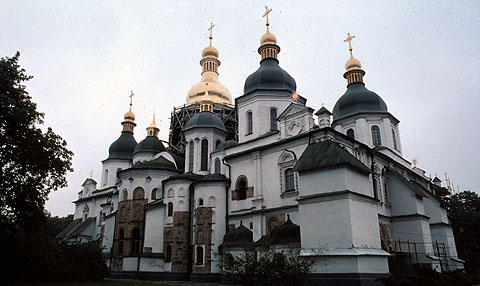![]()
What you must do in this unit
- Review chapter 7 in the textbook, especially the section dealing with the Byzantine Empire.
- Read my HIS 241 remarks on the early Kyivan state and watch my short video. I also have an older video on Byzantium available that I did in about 1995.
- Read the Primary Chronicle excerpt.
- Read my notes on the Byzantine Empire.
- Study the Questions to Consider and the Key Terms for the Unit.
- Take the Midterm exam (150 points).
What you can do in this unit
- Listen to some further information about this unit as a mp3 file. You can also read the information as a txt file.
Some videos that you can watch for this unit
- Fall of The Roman Empire...in the 15th Century: Crash Course World History #12
- See the videos dealing with Russia in the HIS 241 course.
- For extra credit please suggest to your instructor a relevant video for this unit of the course. Send the title of the video, the URL and a brief explanation of why you find the video interesting and applicable to the material that is being studied in this unit.
Extra Credit Options
- For up to 25 points of extra credit, in a one-page paper (maybe two pages), summarize the main issues of the Iconoclasm dispute that took place in the eighth century, using such sources as the Catholic Encyclopedia, John of Damascus, the Decree of the Second Council of Nicea, or any other sources you wish to use. Please be sure to cite your sources.
- For up to 25 points of extra credit, read the short version of the Russkaia pravda (the earliest Russian law code) and write a one-page paper in which you compare and contrast this early Russian law code with other law codes such as Hammurabi, the Ten Commandments, etc.
- For up to 10 points of extra credit, read Grand Prince Vladimir Monomakh's Instruction to His Children (Use PDF if website is unavailable.) and write a paragraph in which you explain the Grand Prince's conception of the political state.
- For a maximum of 10 points of extra credit, read Procopius: The Plague, 542, from his History of the Wars, and write a paragraph in which you assess the impact of the plague on Roman/Byzantine society. If you want a lot of extra credit, you can do some research and compare this account of the plague with accounts of the Black Death that struck Europe in the 1340s.
- For up to 5 points of extra credit, you can submit the answers to the Primary Chronicle study questions. Please write in formal, complete sentences.
- For extra credit, please suggest a relevant website for this unit of the course. Send your instructor the title of the site, the URL and a brief explanation why you find the information interesting and applicable to the material being studied this unit.
Unit Learning Objectives
- Upon successful completion of this unit, you will be able to (1) demonstrate knowledge of the key characteristics in the development of Kyivan Rus' and (2) analyze a historical source.
